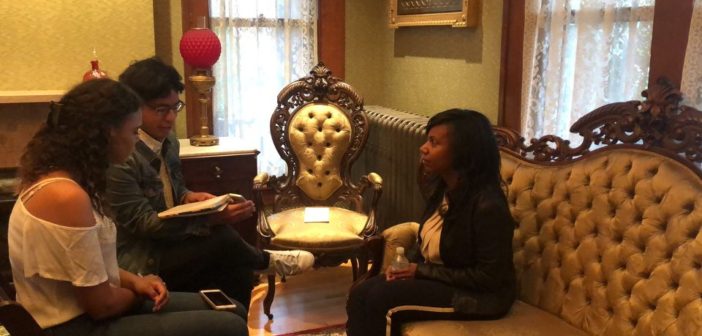Award-winning reporter Natalie Moore visited NCC on April 17. Moore, who has several books published and has been featured in a plethora of publications, currently reports for WBEZ on segregation and inequality on Chicago’s South Side.
“I don’t think people understand how (segregation) came to exist,” Moore said. “Yes, there is segregation, but there isn’t any interrogation about why. My stories, while they rely on data and research from scholars, make that connection with the people.”
Moore says she takes the facts and figures that go along with segregation and applies them to the people in the neighborhoods she covers. She calls journalism a mechanism that can tell the stories without overwhelming readers.
“People treat segregation like a characteristic…not something insidious and deliberate,” Moore explains. She adds that the history of segregation isn’t always taught, so the first thing people can do to learn about it is to examine the segregation in their own lives.
“It is important for people in their communities to recognize the history of segregation in order to learn how to overcome it,” Moore said.
Segregation, Moore said, is an “American construct” that is based on power and resources. When powerful officials choose to send their resources to affluent, white communities, they create state-sanctioned segregation.
Yet, Moore argues that society can still have minority spaces without state-sanctioned segregation.
“The first step to understanding these issues is to look at choices,” Moore explains, “where you live or where your family chose to live. (We) have to be honest with ourselves about why we do what we do, and that can be challenging.”
Moore uses her own time spent growing up in Chicago, and now living in the city with her husband and children, to help write her stories.
“I like to think that because I grew up in one of these (segregated) communities, that gives me a perspective,” Moore states. “That doesn’t shield me (when I’m writing); people can make mistakes and it can be easy to fall into stereotypes.”
Moore adds that she works to keep her stories versatile. “It’s not always ‘here are these bad policies’ or, ‘here are bad things that are happening.’ I try to mix of joyful stories in showing neighborhood life.”
“Some of that is very ordinary,” Moore continues, “You want it to rise to news value, but these are things that can happen in other communities as well.”
Moore’s latest book, “The South Side: A Portrait of Chicago and American Segregation” is available now.
Interview conducted by Cheyanne Daniels and Rudy Ruiz. Video by Peter Hunt Szpytek.

